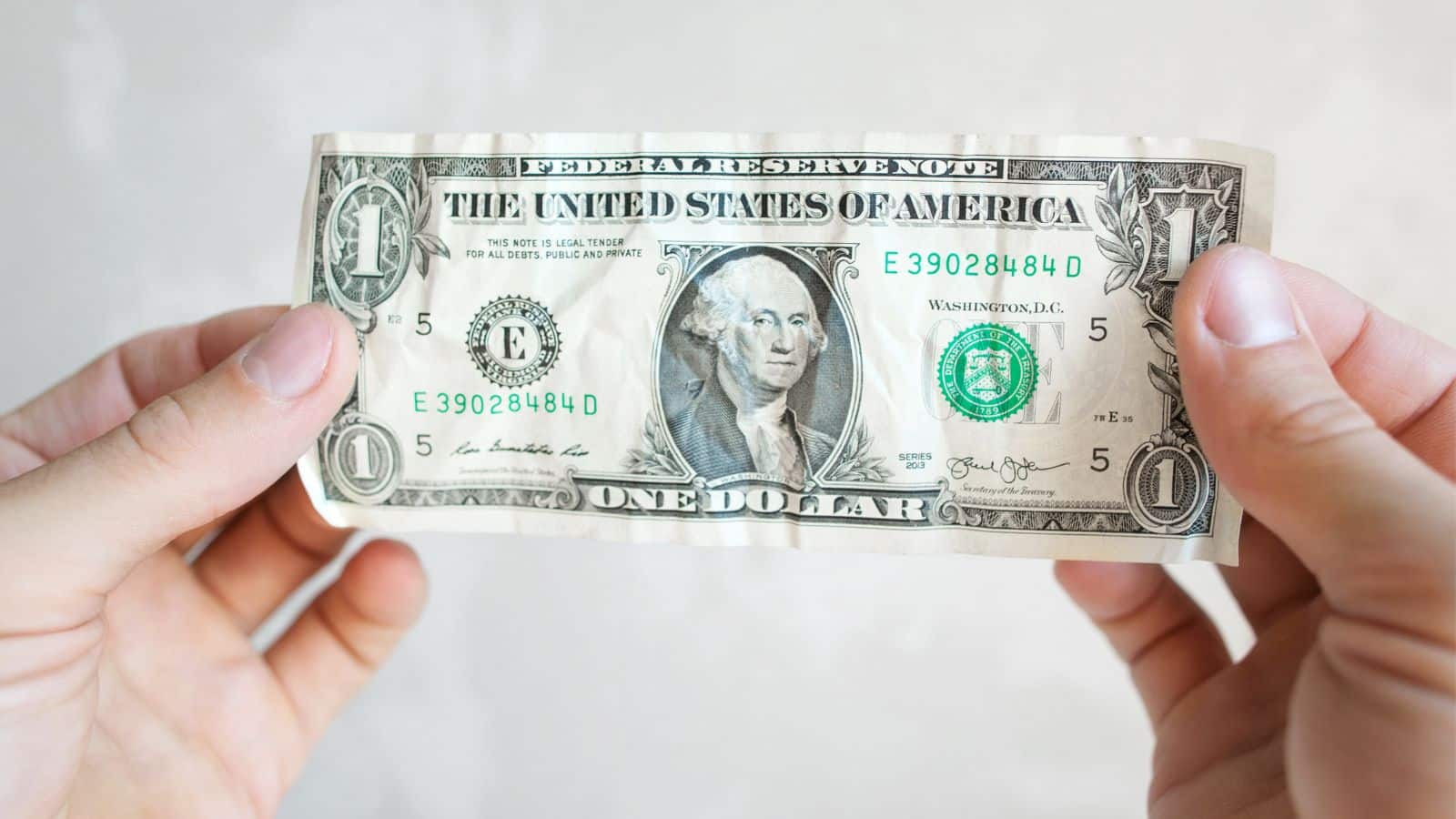A dollar used to buy a lot more than it does today. Items that were once affordable staples now cost several times as much, making it harder to stretch your paycheck. Everyday prices have changed so much that many things once seen as cheap are now small luxuries. Here are seven things that used to cost just $1—and how those prices look now.
Loaf of Bread

In the late ’90s and early 2000s, a dollar could easily buy a standard loaf of bread at most grocery stores. Today, prices often range from $2.50 to $4, depending on the brand and location. Rising wheat costs, supply chain disruptions, and inflation have all played a role in the jump.
💸 Take Back Control of Your Finances in 2025 💸
Get Instant Access to our free mini course
5 DAYS TO A BETTER BUDGET
Gallon of Gas

There was a time when seeing $1 per gallon on the gas station sign was normal, especially in the ’90s. Now, prices have climbed to $3 or more in most parts of the U.S., with spikes hitting even higher during economic or political instability. Fluctuations in crude oil prices and refining costs keep gas far from its old price point.
Pound of Ground Beef

A pound of ground beef for $1 was once common in grocery store ads. Today, you’re more likely to see it at $4 or $5 per pound, with leaner cuts costing even more. Factors like feed costs, drought conditions, and higher transportation expenses have all pushed prices upward.
Movie Ticket (Matinee)

Not long ago, a $1 movie ticket was a fun way to enjoy a weekend afternoon, especially at smaller theaters or matinee showings. Now, even discounted screenings often cost $6 to $8, with regular showings easily hitting $12 or more. Rising production budgets and theater operation costs have driven the change.
Postage Stamp

In the early 2000s, $1 could buy a few first-class postage stamps. Today, one stamp alone costs well over 60 cents, meaning you can no longer send multiple letters for a dollar. The increase helps cover operational costs for the postal service and inflation over the years.
Dozen Eggs

A dozen eggs for $1 was a grocery staple in many households. Prices now vary widely, often between $2 and $4, with spikes even higher due to events like the recent avian flu outbreaks. Feed costs and supply chain pressures have also influenced the shift.
Dollar Store Items

When dollar stores first became popular, nearly everything in the store cost exactly $1. Today, many have quietly raised prices to $1.25 or more, citing increased costs for goods, shipping, and labor. While still affordable, the concept of a true “dollar” store has largely faded.
Prices Have Come a Long Way

These shifts in everyday prices show just how much inflation and changing market conditions have altered spending power. While $1 doesn’t buy what it used to, being mindful of price changes can help you make smarter shopping choices today.
I’m Frugal. Here Are 55 Ways I Save Every Day

This huge list of more than 50 frugal living hacks teaches you how easy it can be to live frugally and intentionally. Some of these tips will save you some serious money, and some might only save you a few dollars, but those savings, compounded over time, can have a huge impact on your budget. I’m Frugal. Here Are 55 Ways I Save Every Day



